South American land border crossed—check.
Now to get to the highest administrative capital in the world and our next destination, La Paz. No longer on our originally scheduled bus ride with no formal bus terminal insight, a “collectivo” was our next best thing. Then began our search for an unmarked mini-van to share some shoulder-to-shoulder time with locals as we made our way to La Paz. We made it a good 10 minutes in the first one we found only to be rejected access to the only road out of town. As it turns out, a group of men are running a bit of a mafia-like operation blocking the road with cones and only then letting vans with drivers that are “friends” with them pass through. In a turn of fortune, we were kindly adopted by two young Bolivians who not only helped us find some amigos of these men, but also showed us how to navigate all the way to where we were staying. Not a bad start Bolivia!
La Paz quickly won us over with its buzzing atmosphere, delicious salteñas, and a rough-around-the-edges, Gotham-City-esque aesthetic.
Teleféricos & Miradors
Instead of a subway system, the people of La Paz travel in the air via the city’s many Teleférico lines. Our first ride left us awestruck as we descended into the deep valley, greeted by panoramic views of the sprawling city. At an altitude just below 12,000 feet, La Paz is one of the highest cities in the world—yet the surrounding mountains still managed to tower above. For a cheap adventure one day, we rode four different lines with no destination in mind, simply to take in the views from above.
One thing we quickly learned about La Paz: there’s no such thing as “going for a walk”—only hiking. You’re constantly moving uphill or downhill to reach your next stop. On the bright side, this makes for plenty of miradors (viewpoints) around the city. We weren’t the only ones enjoying the views; parks were packed with couples of all ages embracing in public displays of affection. Love is definitely in the air here.
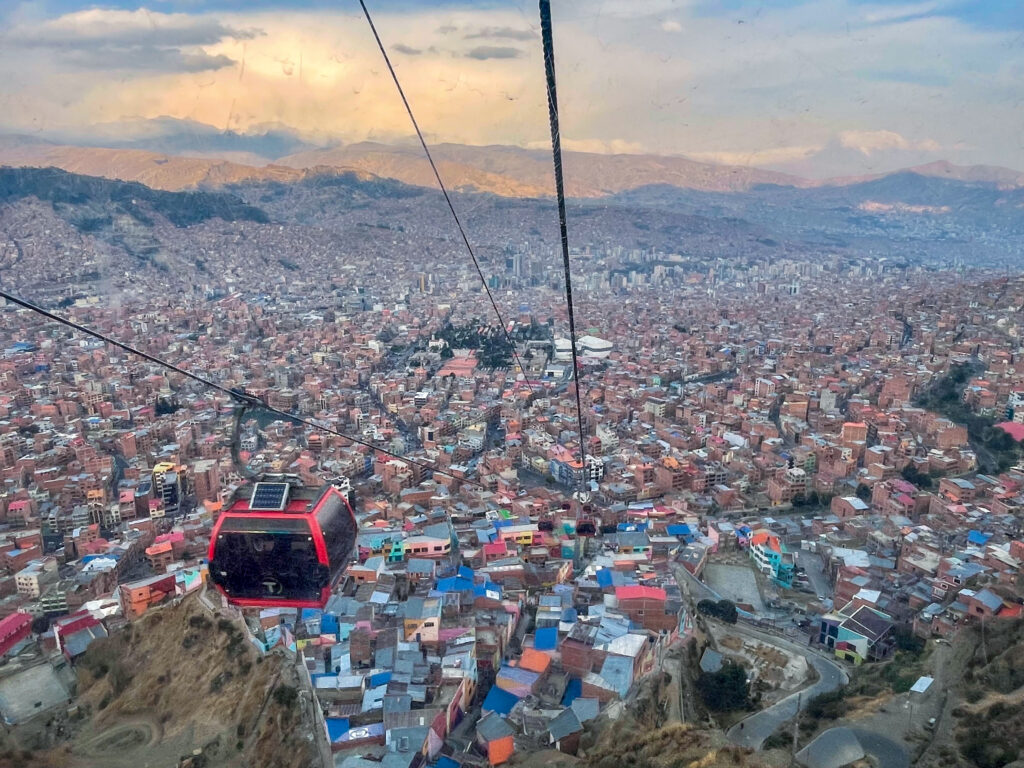
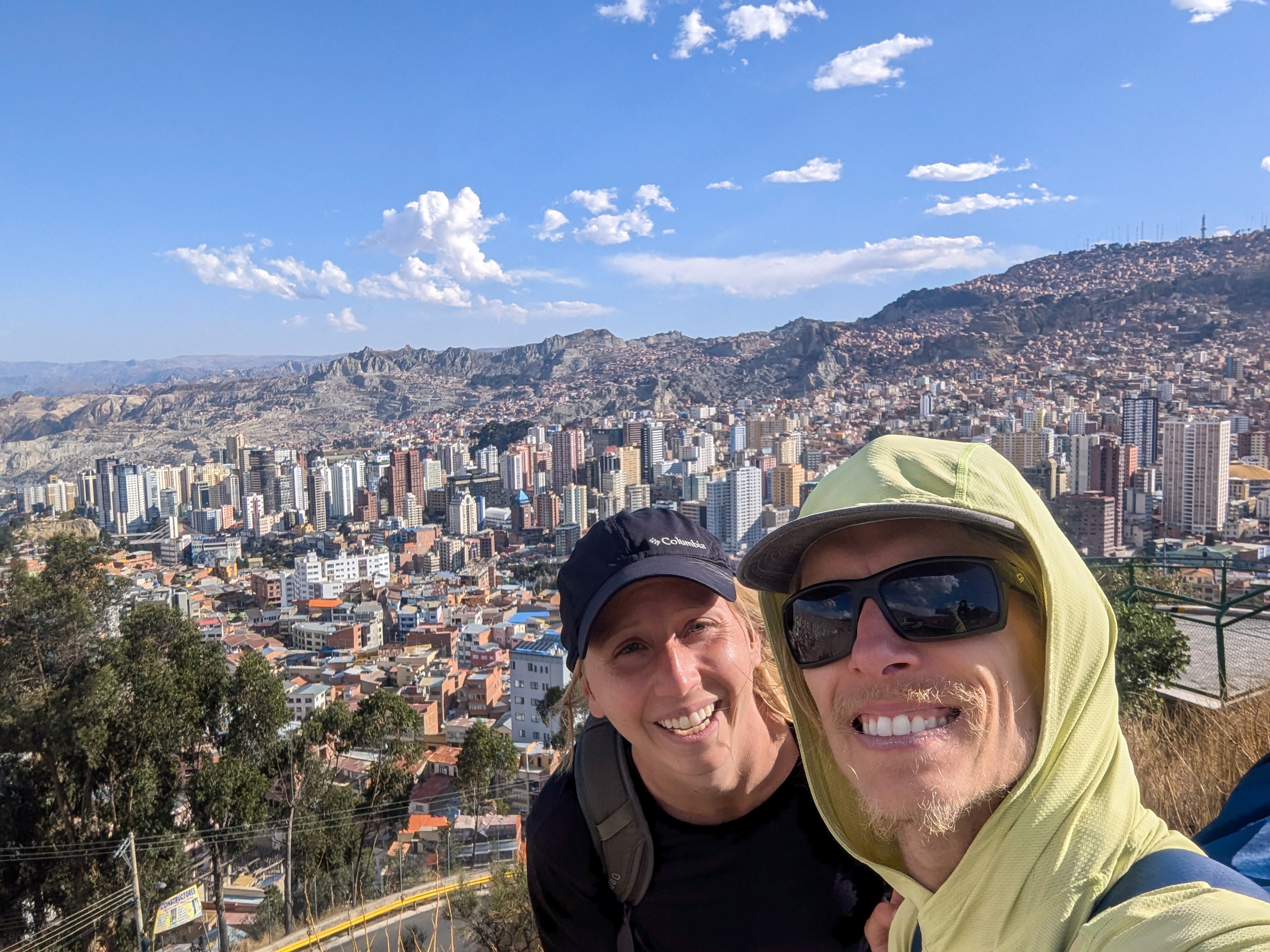
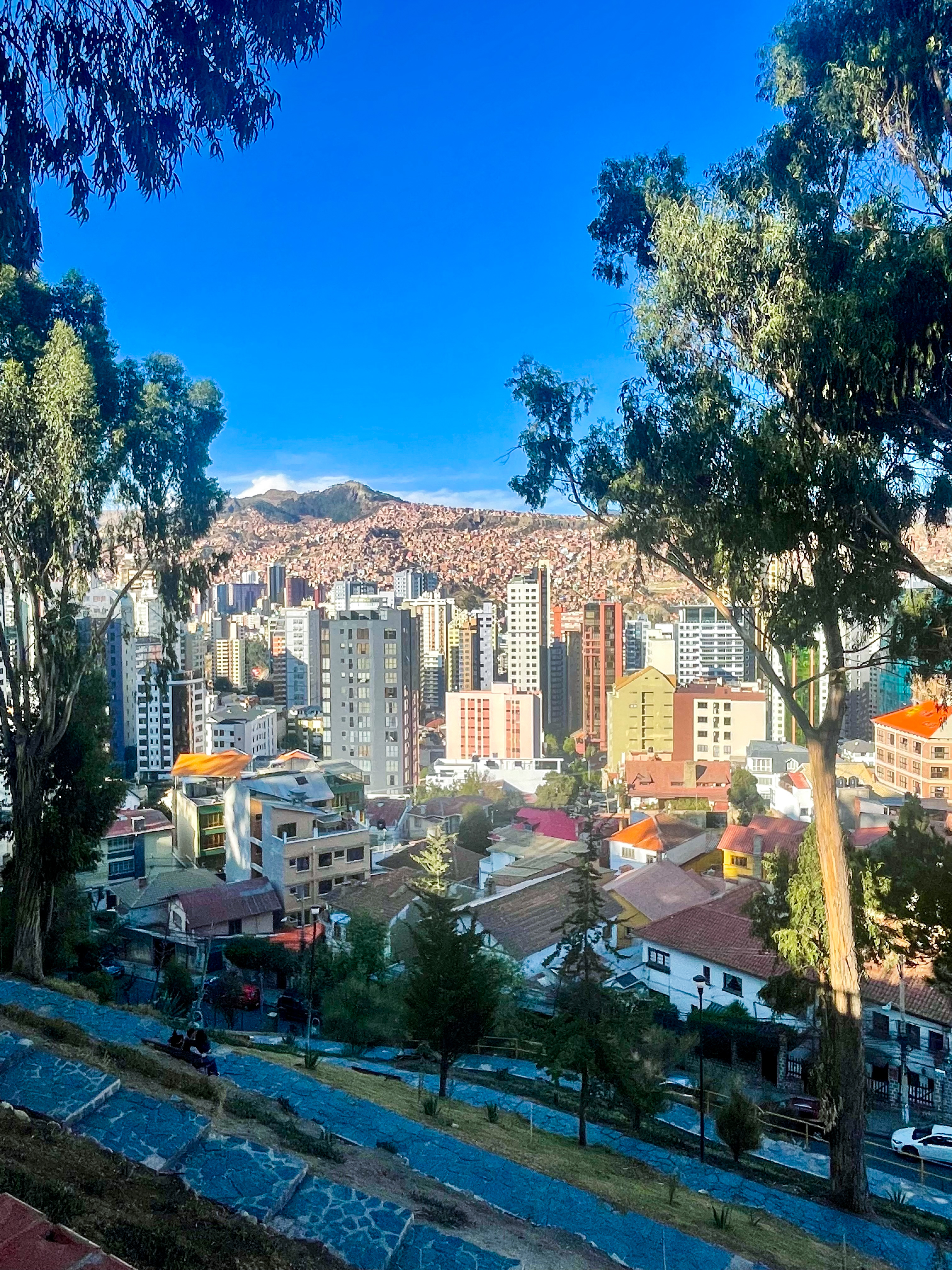
Valle de la Luna
Missing our little moon (Luna, the cat), we decided to visit Valle de la Luna just outside of town. This protected area offers two trails that showcase its jagged formations, carved by years of wind and water erosion, giving the landscape an almost lunar appearance. While the scenery was captivating, our favorite part may have been the scattered love notes we found along the trail. Attempting to translate these romantic messages as we explored, we imagined that this trail was created by someone deeply in love.
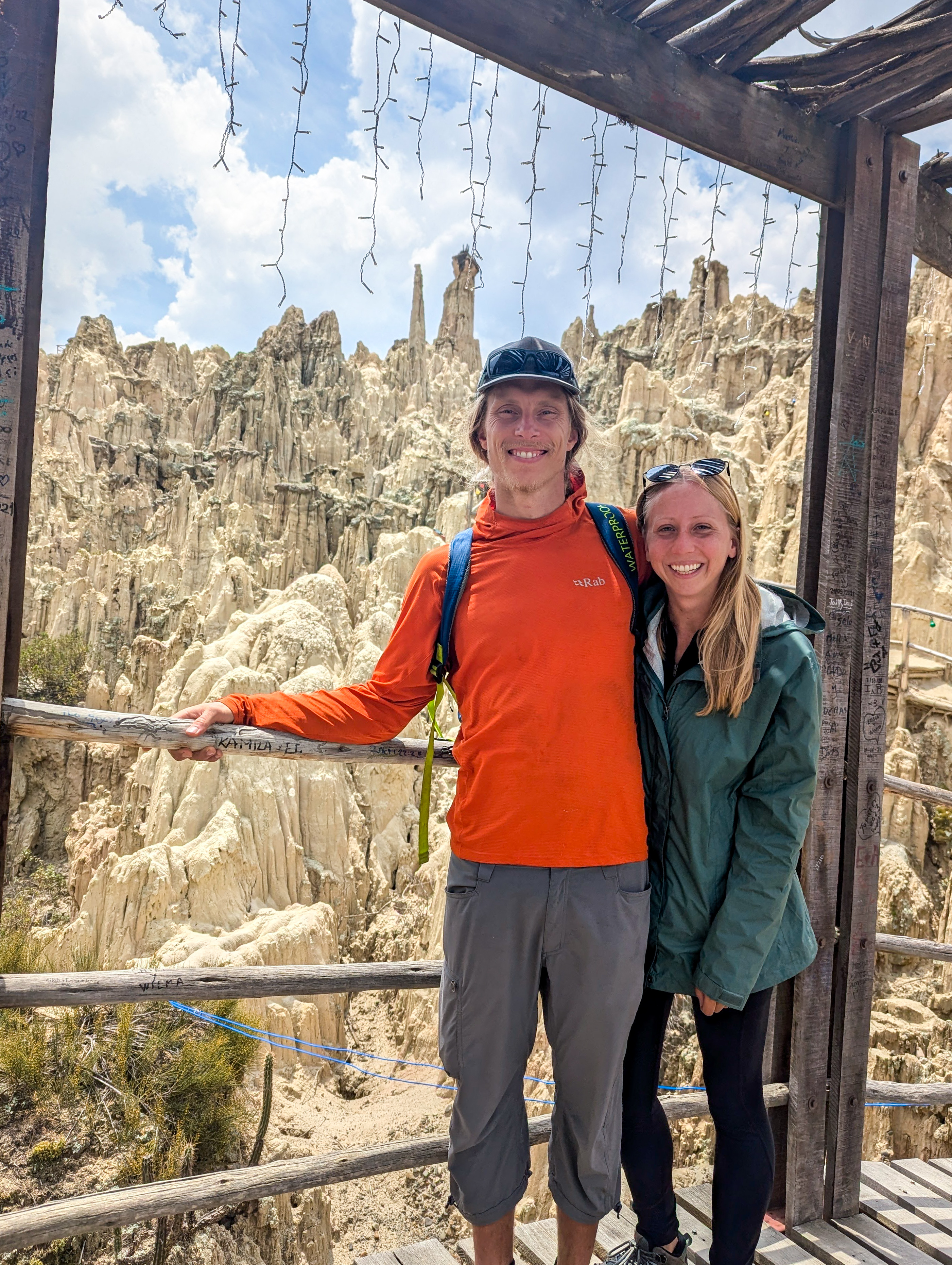
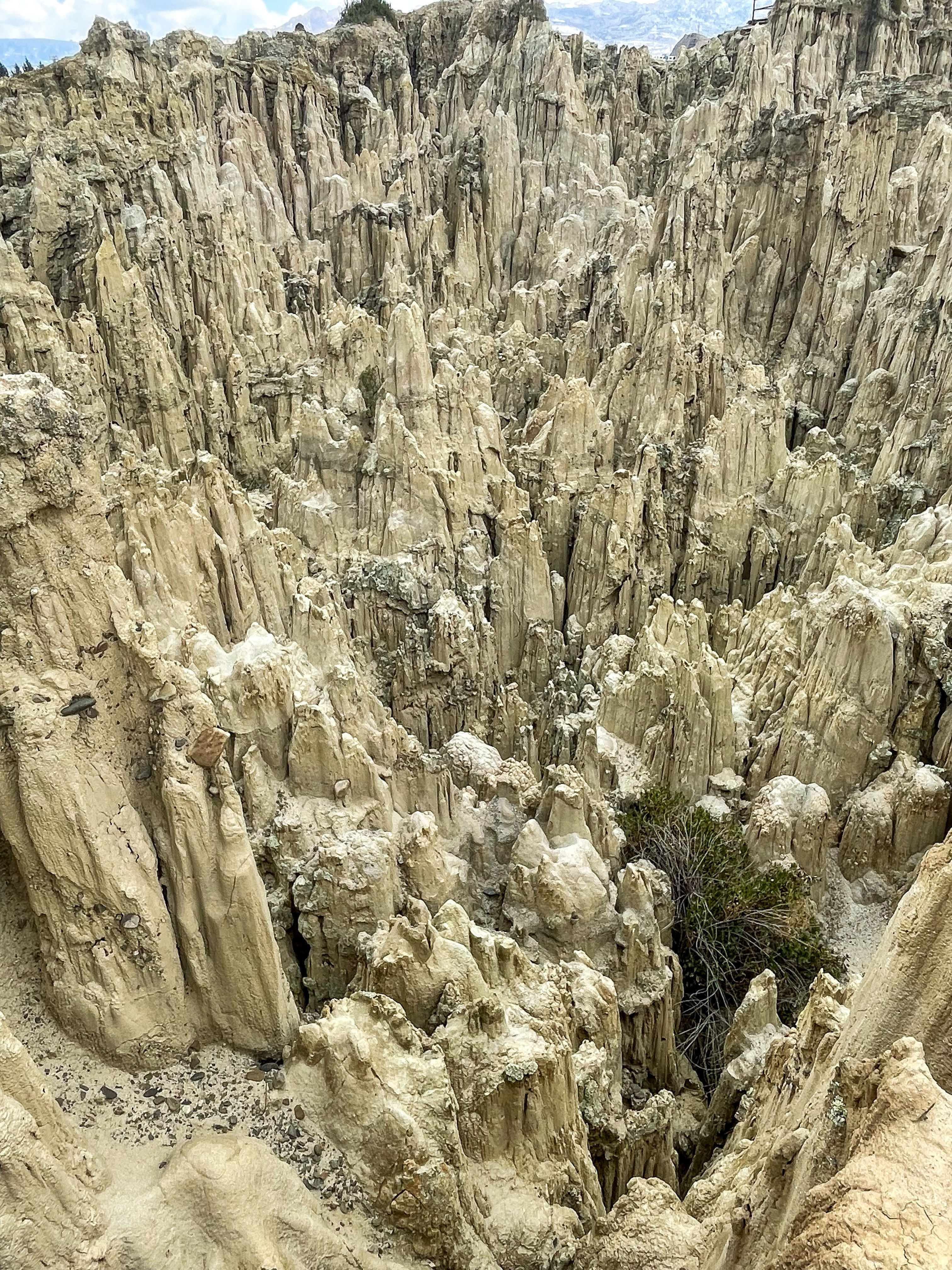
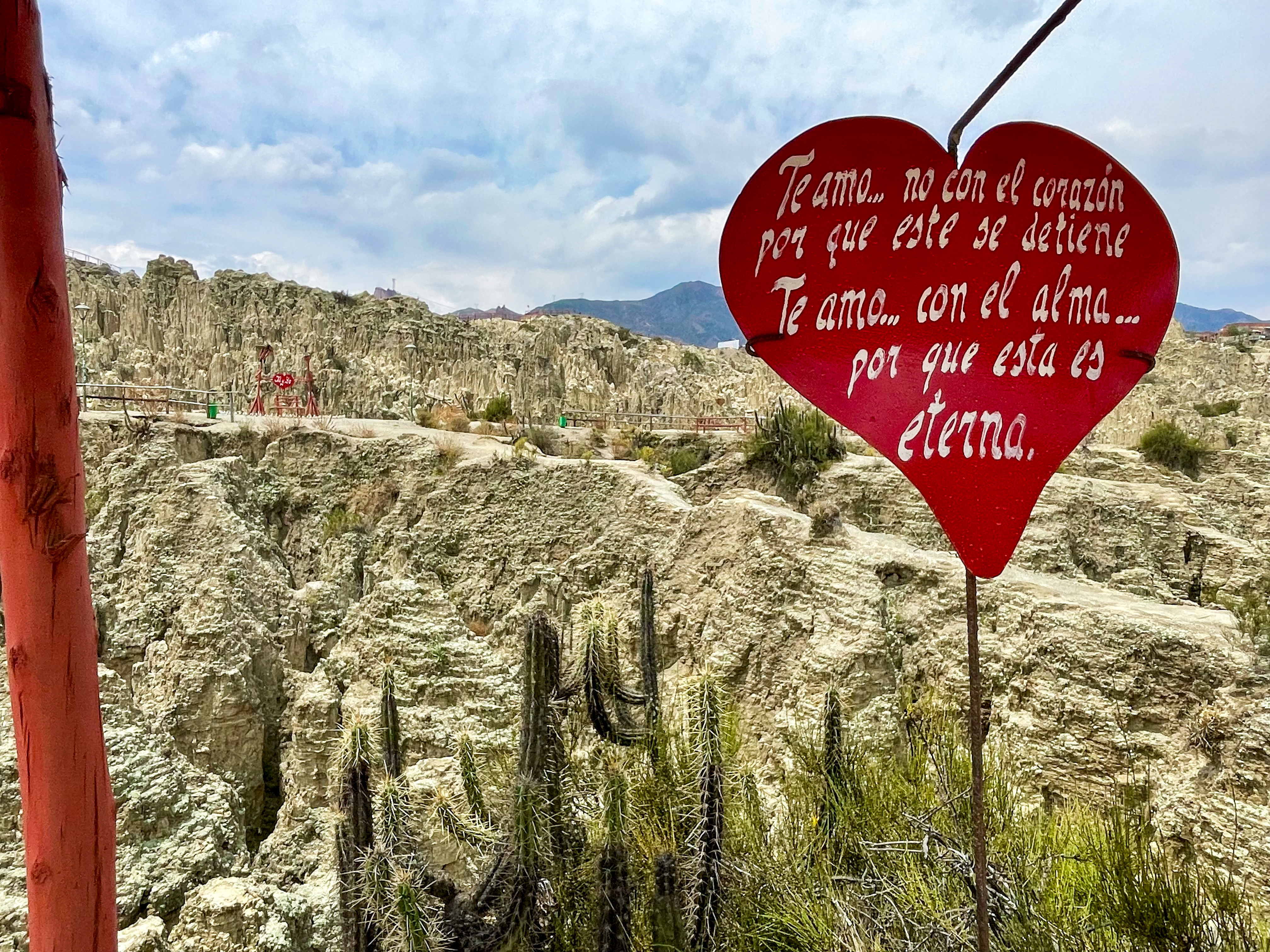
Witches’ Market
What’s a market without a bit of spice am I right? Famous for its colorful, albeit grim offerings of, dehydrated baby llamas and magical pills/potions, the witches market was a particular, yet entertaining mix-up to the usual shopping experience we had experienced thus far on our travels. Guess you’ll have to wait and see what we are able to squeeze by customs!
We also learned about the traditional ritual of offering Pachamama (Mother Earth) a baby llama or alpaca fetus whenever a new building is constructed. It’s buried under the foundation to ensure prosperity. There are urban legends about vulnerable people—supposedly tourists or unhoused individuals—being used as larger sacrifices for big building projects. While this is likely sensationalized, it certainly adds an air of mystery to the market.
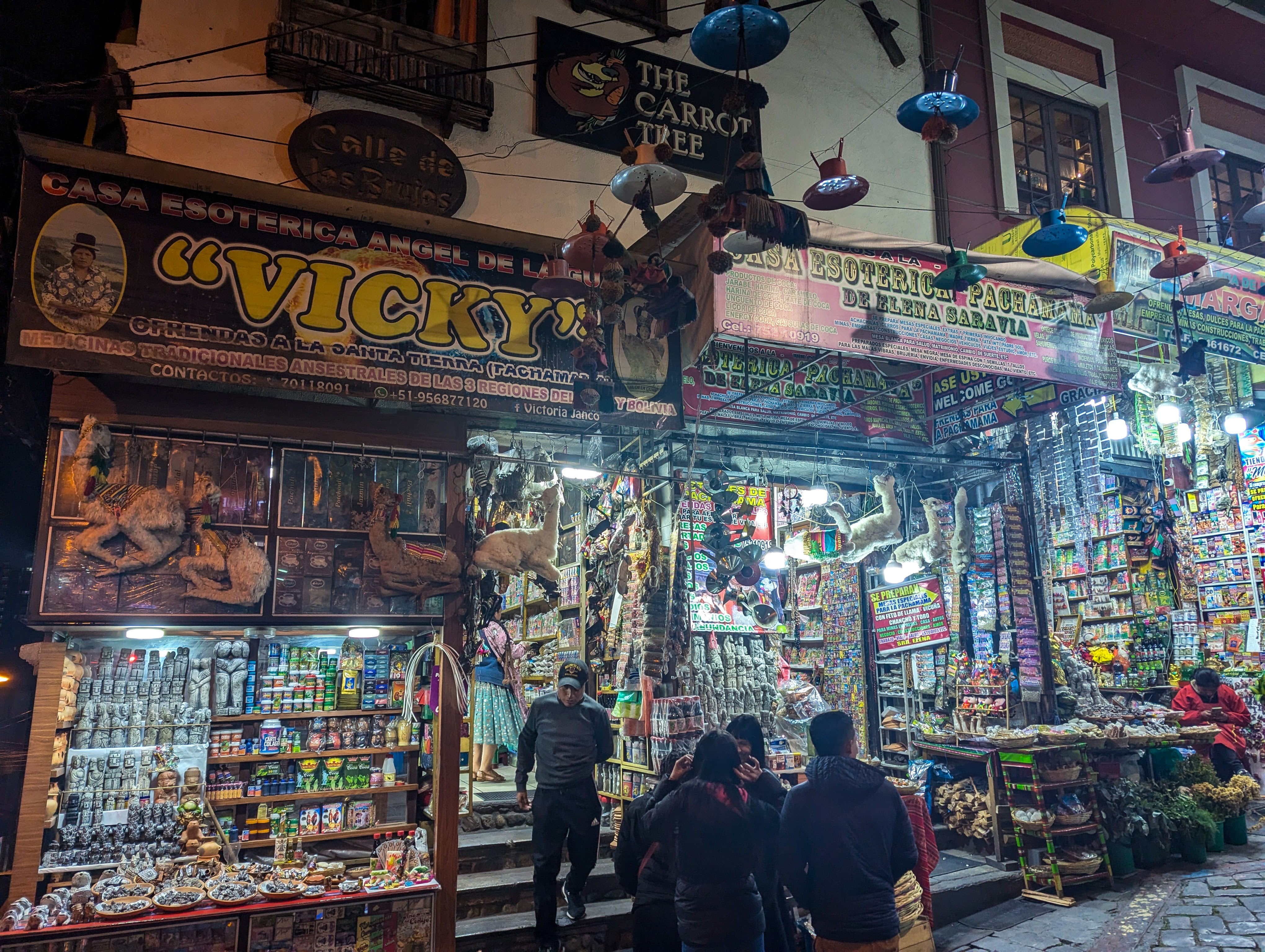
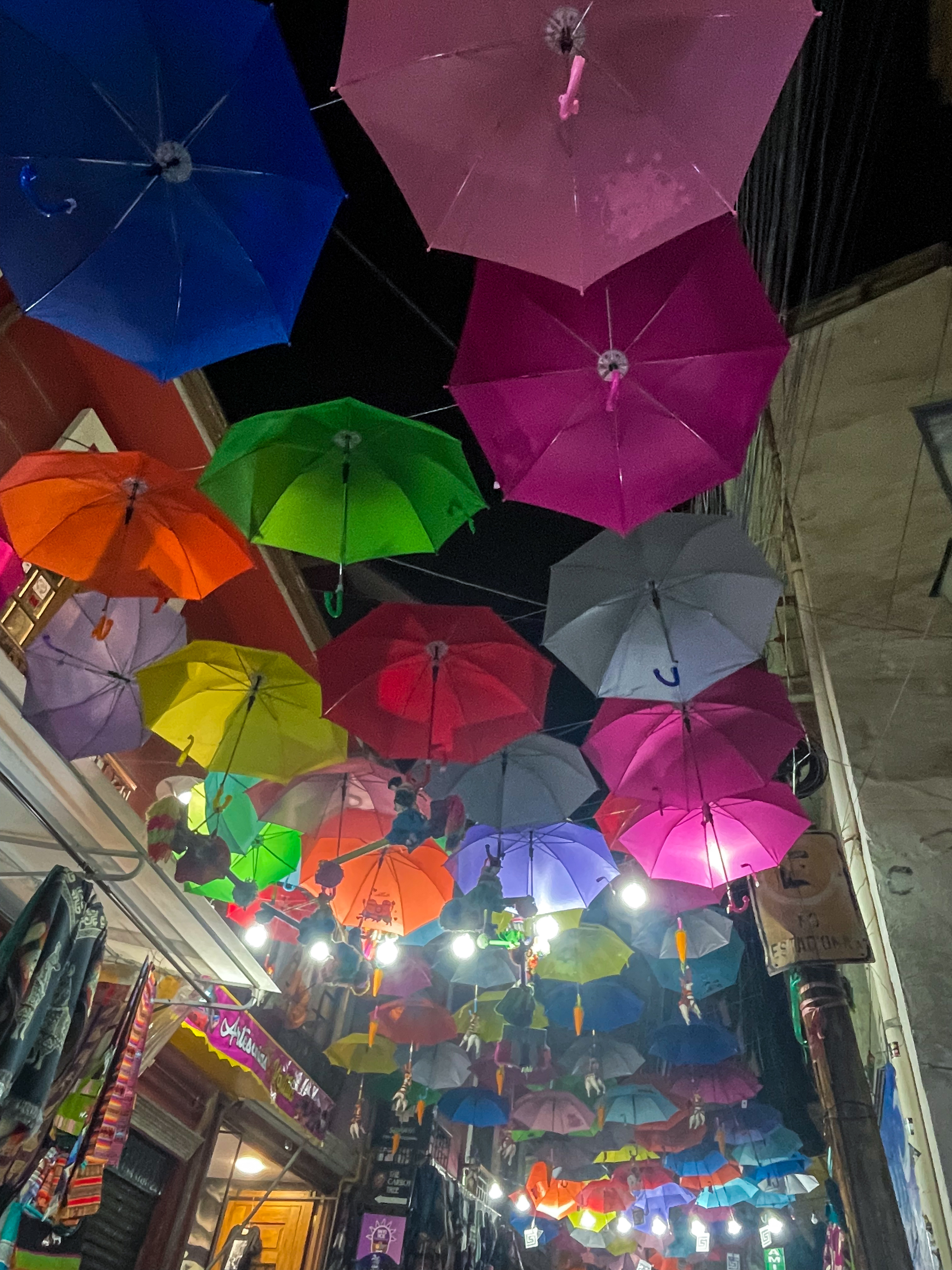
Wrestling
A “cholita” is generally a young Bolivian woman who identifies as indigenous. As it turns out, some of these women have embraced wrestling, performing twice a week in La Paz. Dressed in bowler hats and layered skirts, these women delivered jaw-dropping theatrics and choreographed moves in and out of the ring. This was an evening of pure spectacle! Many of these women are said to perform to provide for their families, and they certainly commanded respect—they’re not to be messed with!
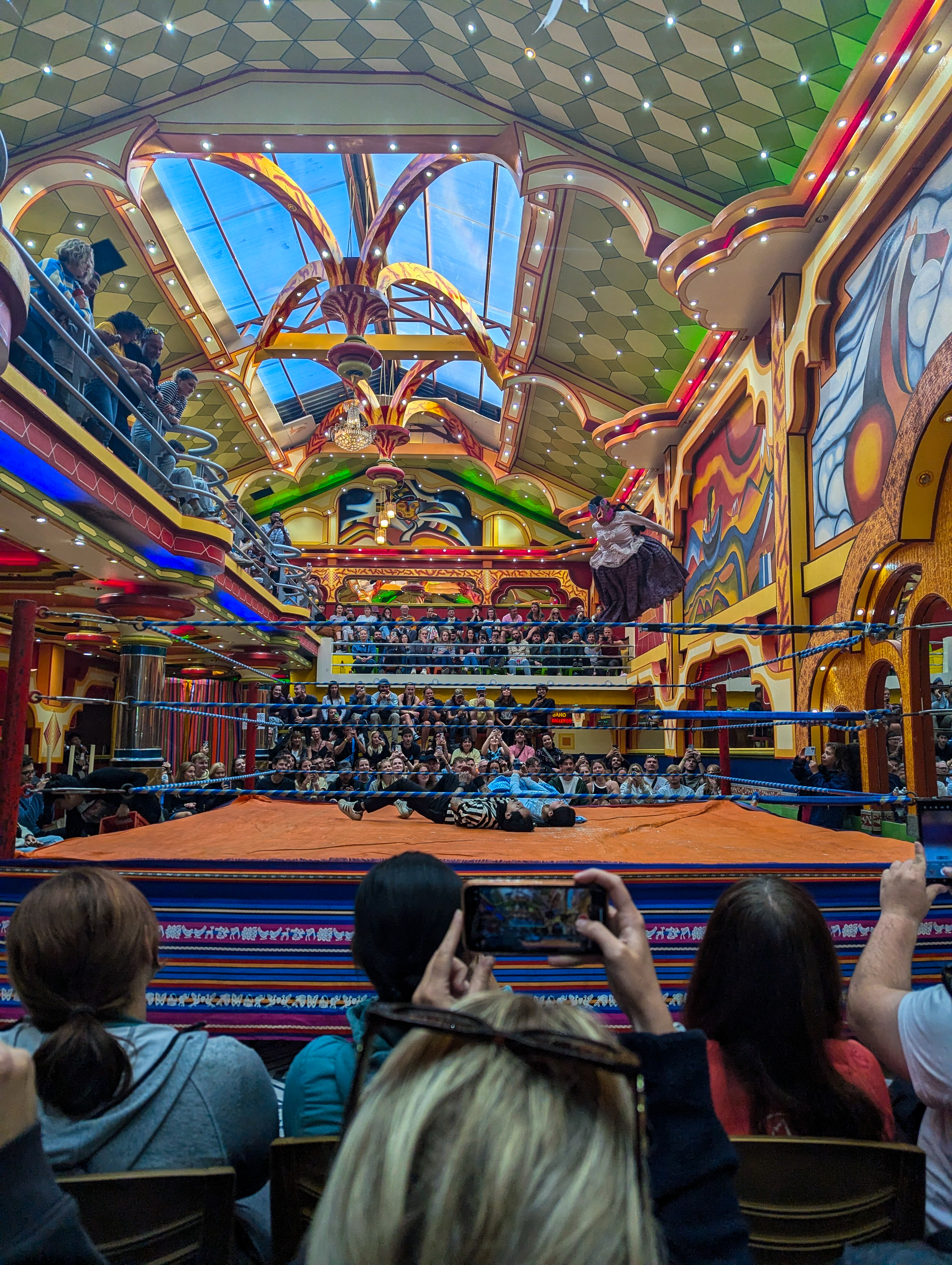
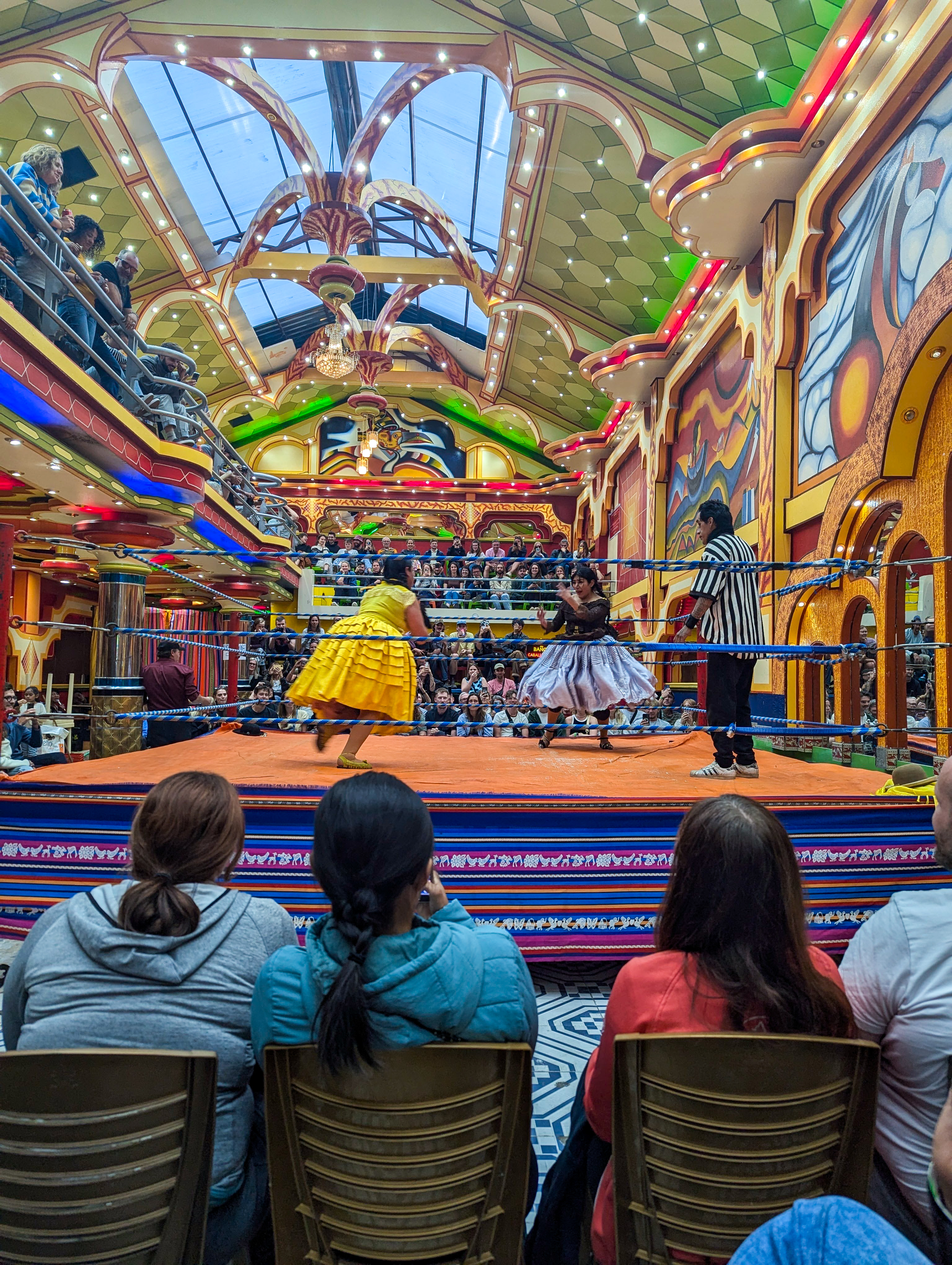
Food
We’d heard mixed reviews about Bolivian food from other travelers, citing blandness or even bouts of food poisoning. We love being proven wrong, though!
Just in time for Jack’s birthday, we discovered one of our favorite foods in South America: salteñas. These baked pastries, similar to empanadas, have a thick crust and a savory, soupy filling of stewed meats and veggies. Imagine a handheld pot pie with a built-in broth. We’re still dreaming about these.
We also tried other traditional Bolivian dishes. Api, a warm, spiced drink made from purple corn, won us over on a chilly morning, reminding us of glögg (zero complains there!). Maní sopa, a creamy peanut-based soup with vegetables, became one of Kim’s favorites. Silpancho—a thin, breaded, and fried meat cutlet—was more Jack’s style.
As for food mishaps, we were reminded that “fancier” restaurants don’t always guarantee a better meal. We’ve found it’s rare that food costing five times as much is actually five times as good. One morning we attempted to ordered a different type of coffee, only to receive a big bowl of ice cream thanks to our pronunciation. Not the worst surprise we’ve ever had!
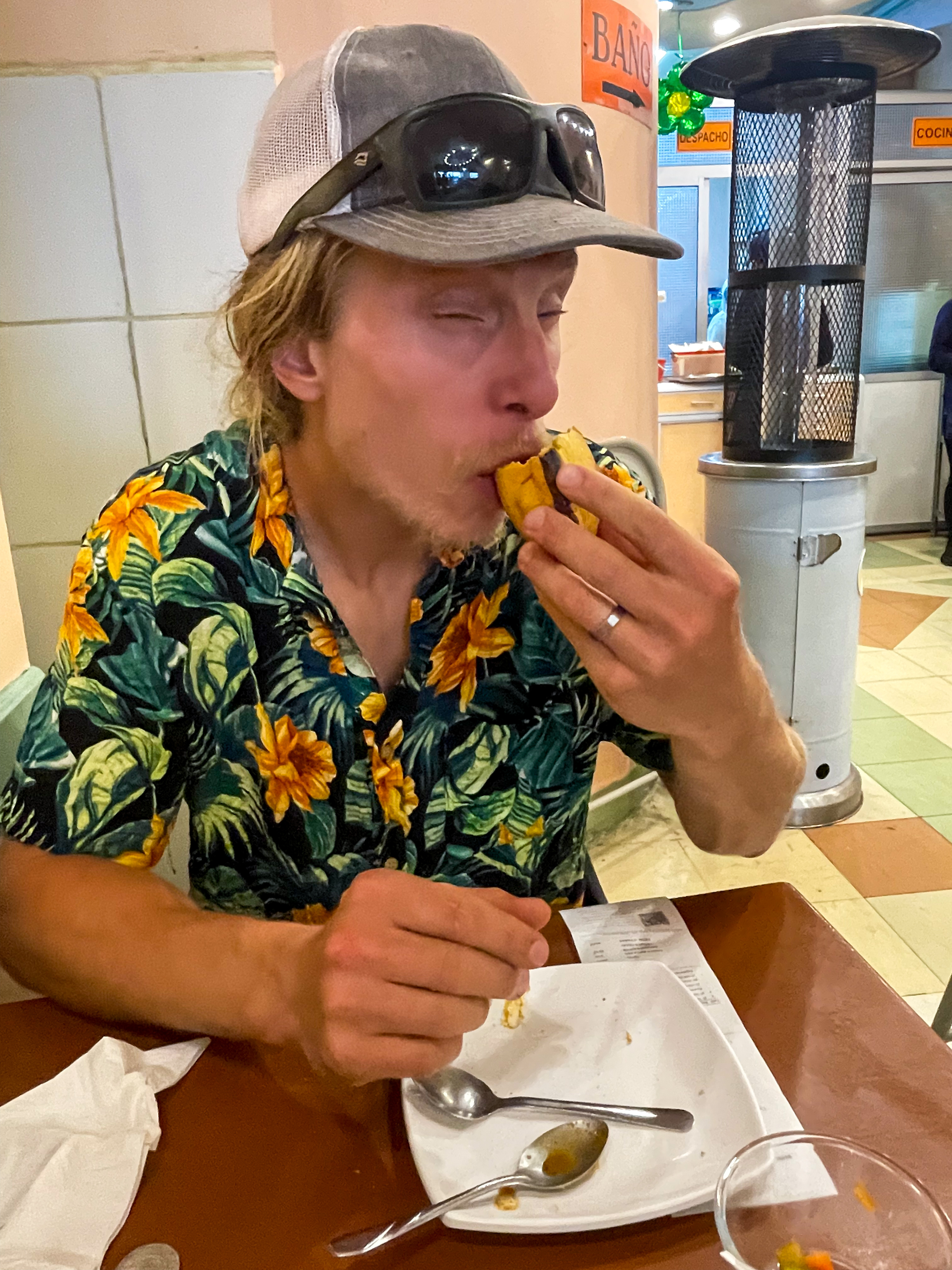
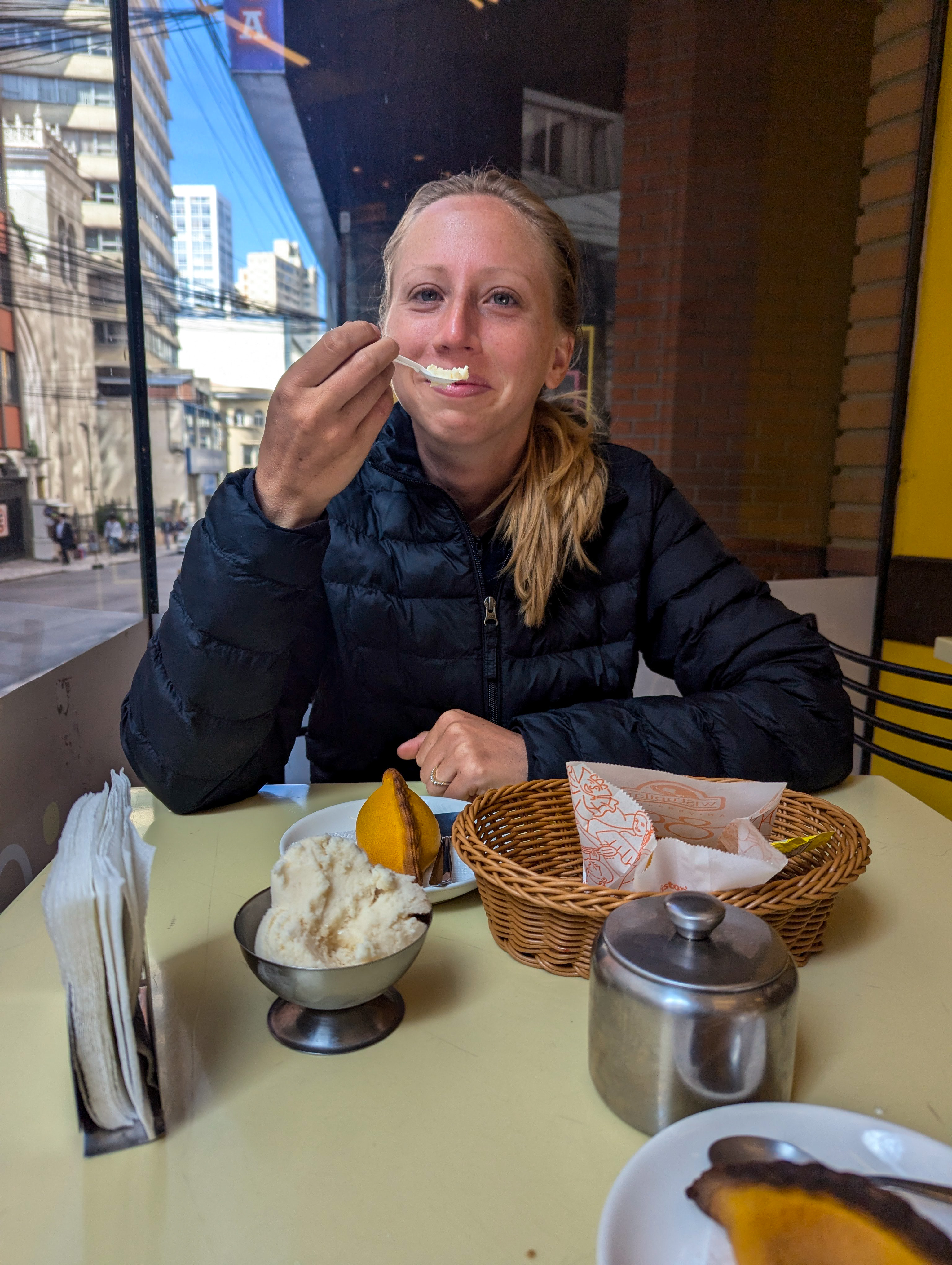
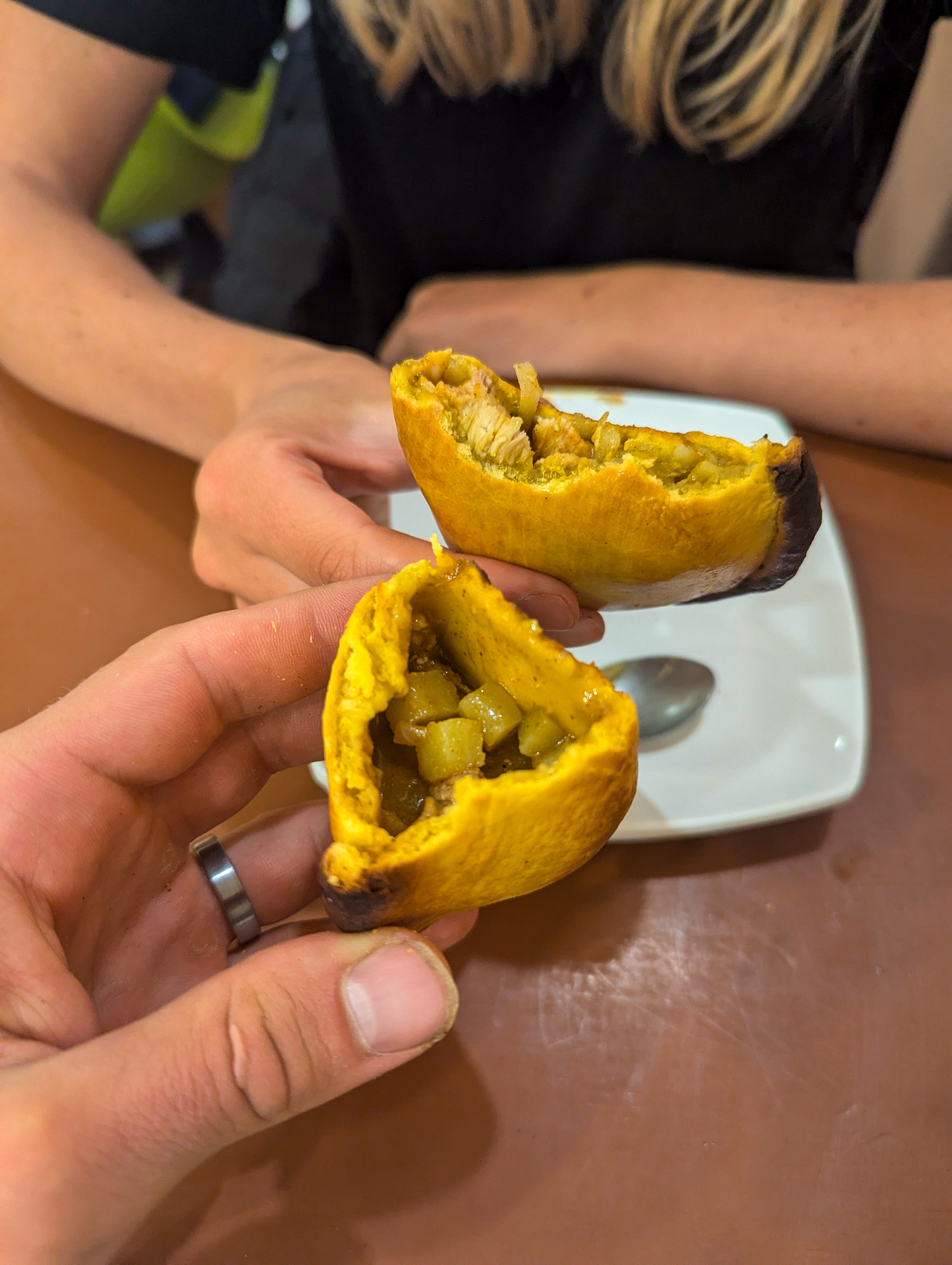
Next stop: Rurrenabaque!